Abstract
The effect of intravenous atropine (2·0 mg/70 kg) and intragastric bile salts (5·0-5·5 mM) on ionic fluxes across the gastric mucosa was studied. Serial instillations of bile salts, in 200 ml 160 m-equiv/l HCl with 51Cr as a non-absorbable indicator, were performed in eight normal subjects. Five subjects received a bile salt mixture of 84% taurocholic acid, 14% taurodeoxycholic acid, and 2% taurochenodeoxycholic acid. With HCl alone (controls) the mean net flux into the lumen was 1·4 m-equiv H+, 2·9 m-equiv Cl−, 1·5 m-equiv Na+, and 0·26 m-equiv K+ per 15 minutes after the first instillation. Where atropine plus bile salt was given the loss from the lumen was 5·4 m-equiv H+ (p < 0·01) and 1·9 m-equiv Cl− (p < 0·05) and movement into the lumen was 3·2 m-equiv Na+ (p < 0·01) and 0·20 m-equiv K+ in the corresponding period. Similar but smaller ion flux changes occurred in three subjects who received atropine and pure taurodeoxycholic acid. The net loss of H+ from the gastric lumen was greater after atropine-bile salts than that shown in previous studies with bile salts alone. It is postulated that atropine reduced the volume of endogenous HCl secretion unmasking the loss of H+.
Full text
PDF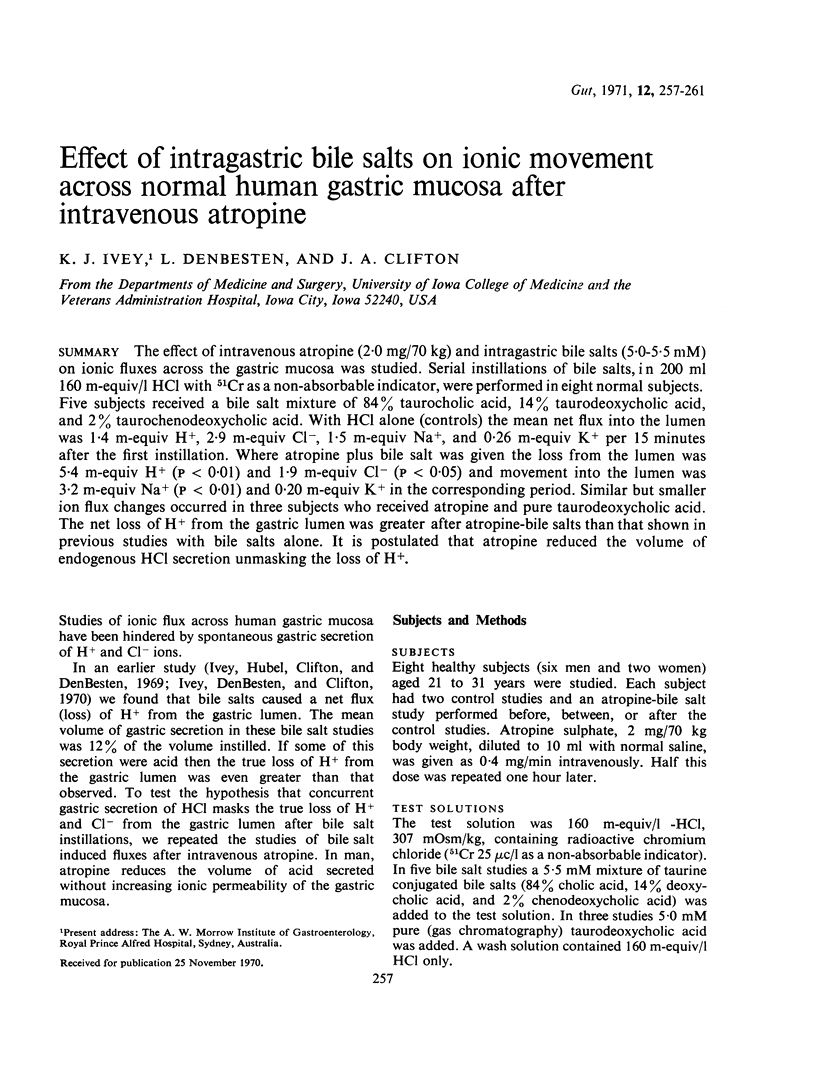
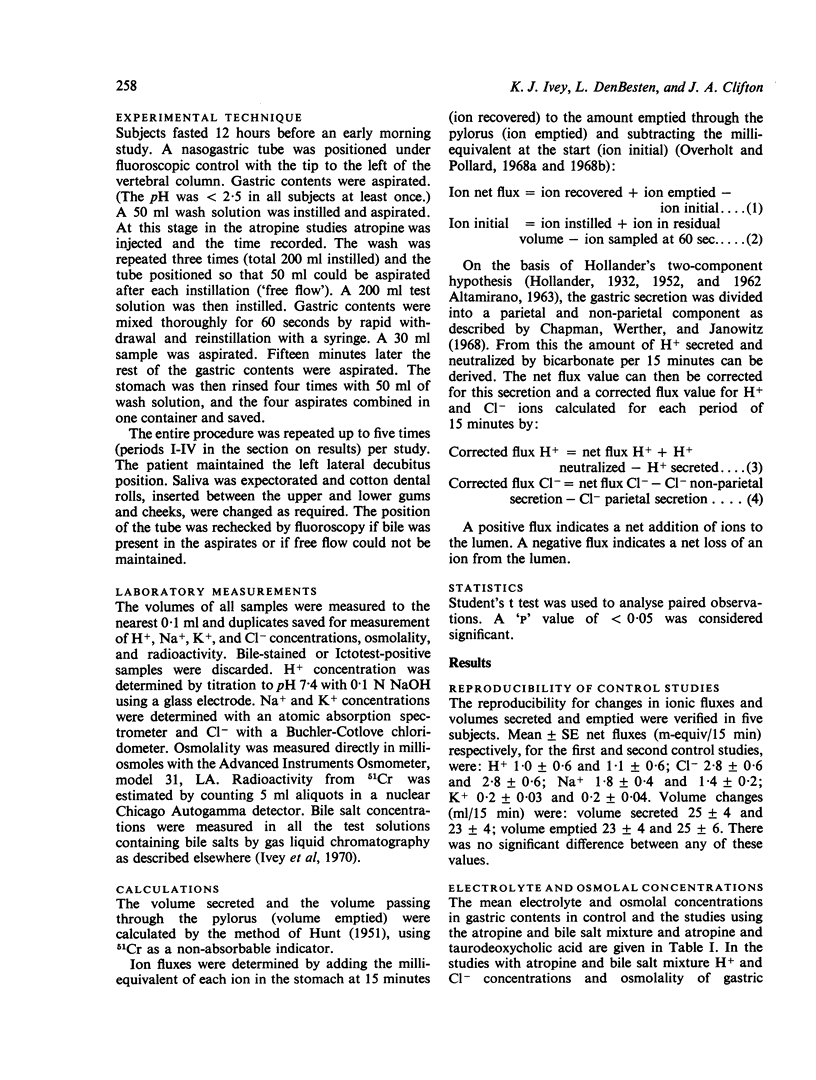
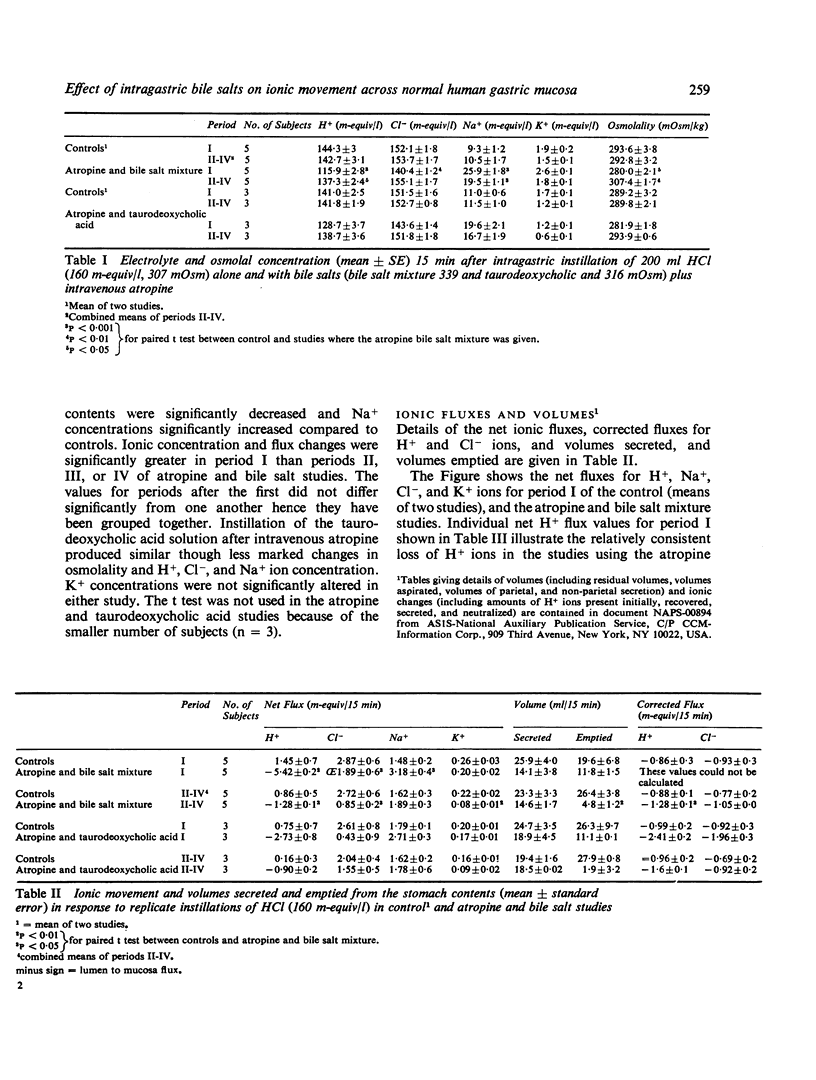
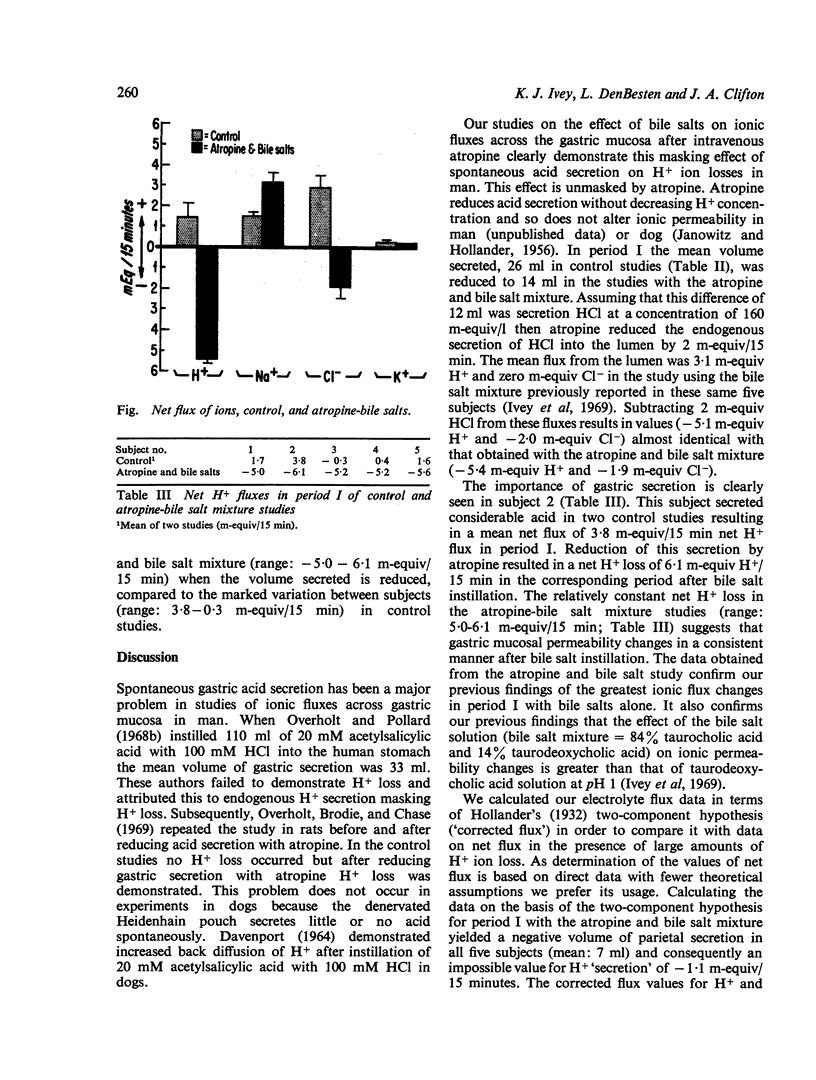
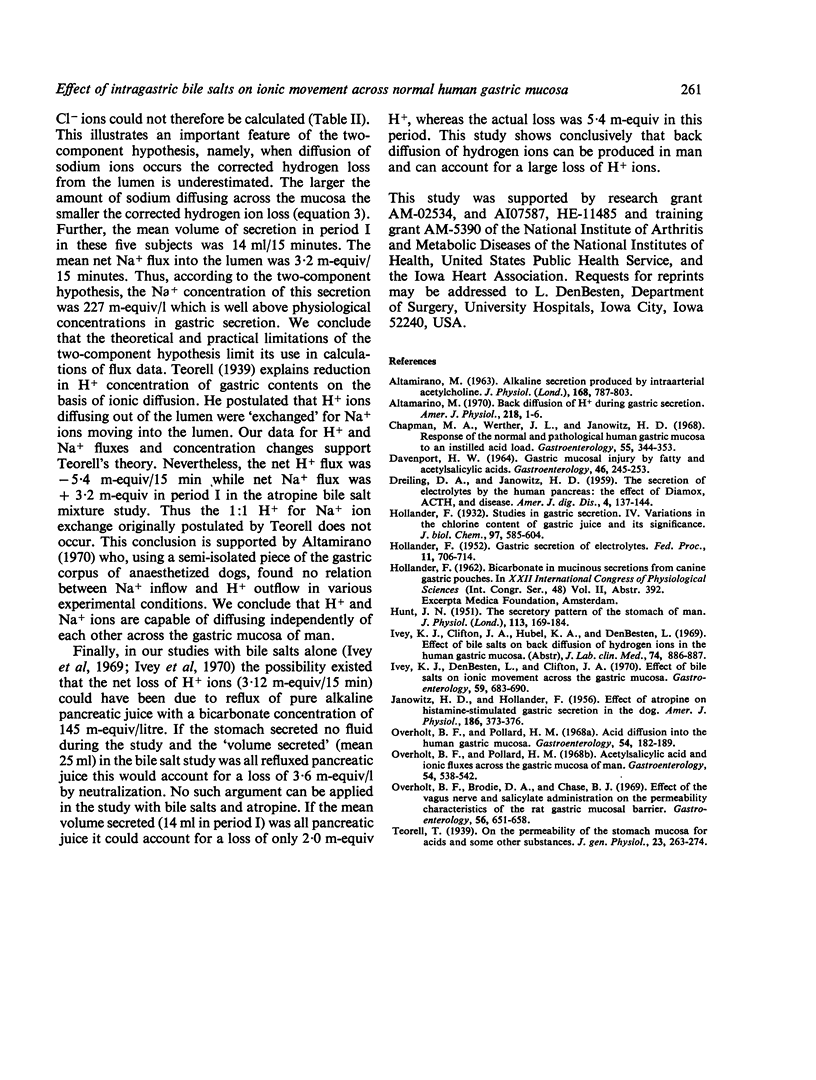
Selected References
These references are in PubMed. This may not be the complete list of references from this article.
- ALTAMIRANO M. ALKALINE SECRETION PRODUCED BY INTRA-ARTERIAL ACETYLCHOLINE. J Physiol. 1963 Oct;168:787–803. doi: 10.1113/jphysiol.1963.sp007223. [DOI] [PMC free article] [PubMed] [Google Scholar]
- Altamirano M. Backdiffusion of H+ during gastric secretion. Am J Physiol. 1970 Jan;218(1):1–6. doi: 10.1152/ajplegacy.1970.218.1.1. [DOI] [PubMed] [Google Scholar]
- Chapman M. A., Werther J. L., Janowitz H. D. Response of the normal and pathological human gastric mucosa to an instilled acid load. Gastroenterology. 1968 Sep;55(3):344–353. [PubMed] [Google Scholar]
- DAVENPORT H. W. GASTRIC MUCOSAL INJURY BY FATTY AND ACETYLSALICYLIC ACIDS. Gastroenterology. 1964 Mar;46:245–253. [PubMed] [Google Scholar]
- DREILING D. A., JANOWITZ H. D. The secretion of electrolytes by the human pancreas; the effect of diamox, ACTH, and disease. Am J Dig Dis. 1959 Feb;4(2):127–144. doi: 10.1007/BF02231234. [DOI] [PubMed] [Google Scholar]
- HOLLANDER F. Gastric secretion of electrolytes. Fed Proc. 1952 Sep;11(3):706–714. [PubMed] [Google Scholar]
- HOLLANDER F., JANOWITZ H. D. Effect of atropine on histamine-stimulated gastric secretion in the dog. Am J Physiol. 1956 Sep;186(3):373–376. doi: 10.1152/ajplegacy.1956.186.3.373. [DOI] [PubMed] [Google Scholar]
- HUNT J. N. The secretory pattern of the stomach of man. J Physiol. 1951 Apr;113(2-3):169–184. doi: 10.1113/jphysiol.1951.sp004563. [DOI] [PMC free article] [PubMed] [Google Scholar]
- Ivey K. J., DenBesten L., Clifton J. A. Effect of bile salts on ionic movement across the human gastric mucosa. Gastroenterology. 1970 Nov;59(5):683–690. [PubMed] [Google Scholar]
- Overholt B. F., Pollard H. M. Acetylsalicylic acid and ionic fluxes across the gastric mucosa of man. Gastroenterology. 1968 Apr;54(4):538–542. [PubMed] [Google Scholar]
- Overholt B. F., Pollard H. M. Acid diffusion into the human gastric mucosa. Gastroenterology. 1968 Feb;54(2):182–189. [PubMed] [Google Scholar]


